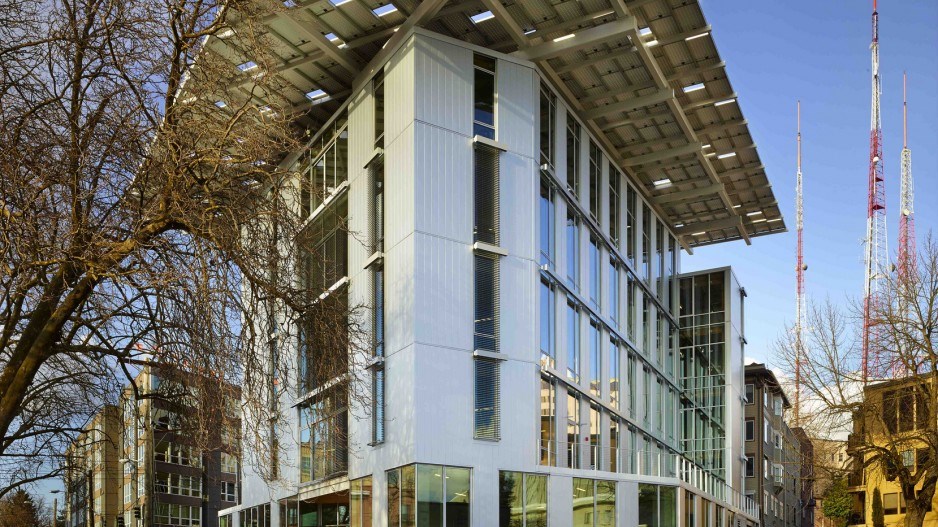At its annual conference this October 8 to 10 in Vancouver, the Architectural Institute of BC will present a panel discussion on what has been called the world’s greenest office building – and the oversized solar rooftop that powers it.
The US$18.5 million, six-storey Bullitt Centre in Seattle, designed by Miller Hull Parnerships, is built to be “zero-energy” and to meet the rigorous standards of the Living Building Challenge. While the 52,000-square-foot building is outfitted to cutting-edge environmental standards, such as insulation and energy-saving heating and cooling systems, it is completely powered by the 575 photovoltaic solar panels on the roof. It was completed last year.
What is remarkable about the Bullitt Centre, and of interest to Vancouver developers, is that it is solar-powered in a rainy climate that is much like B.C.’s coast.
Providing enough solar panels to bring the net-zero energy goal within reach in cloudy Seattle meant an array covering 14,000 square feet, projecting as much as 20 feet beyond the building's perimeter.
In the summer, the Bullitt Center will produce vastly more electricity than it uses, and in the winter it will produce less. The surplus power will be sold into the Seattle electric grid. The building then draws electricity from the grid in the winter months when production is low. To achieve its “net zero energy” goal, the summer production surplus must meet or exceed the winter production deficit. In all, the solar grid delivers 242 kilowatts of power, according to the designers.
The Seattle structure serves as the headquarters for the environmentally focused Bullitt Foundation and as office space for like-minded tenants. If it achieves Living Building (LB) certification, it will be one of the only four in the world. Of 15 completed projects seeking LB certification from the International Living Future Institute, the Bullitt is the largest commercial building, and one of the few located in a dense urban environment, according to Miller Hull.




